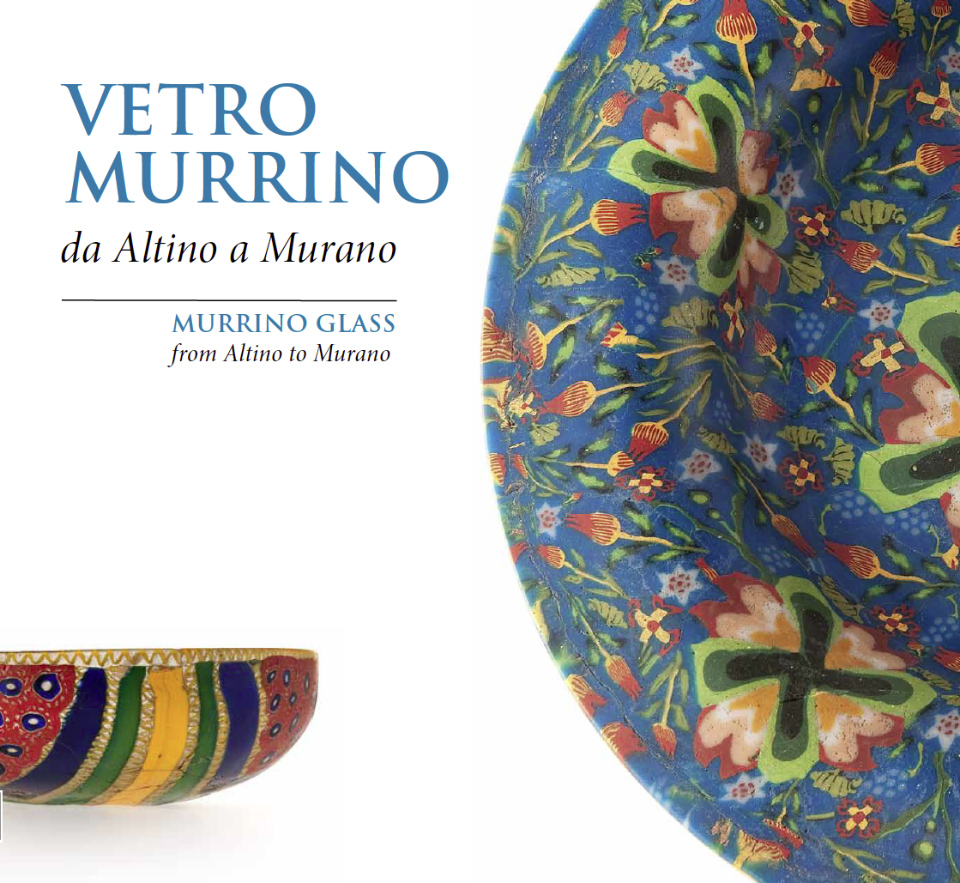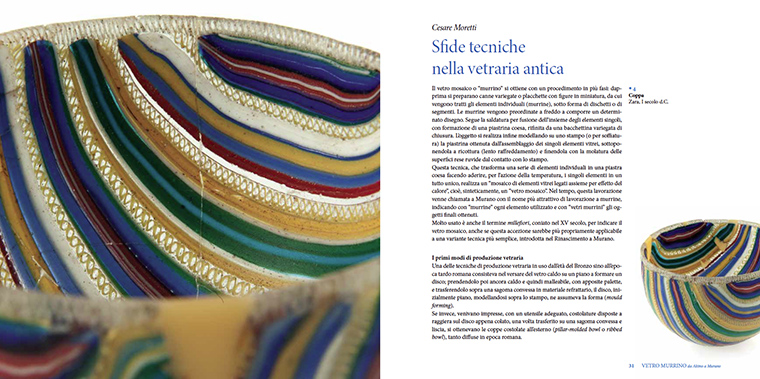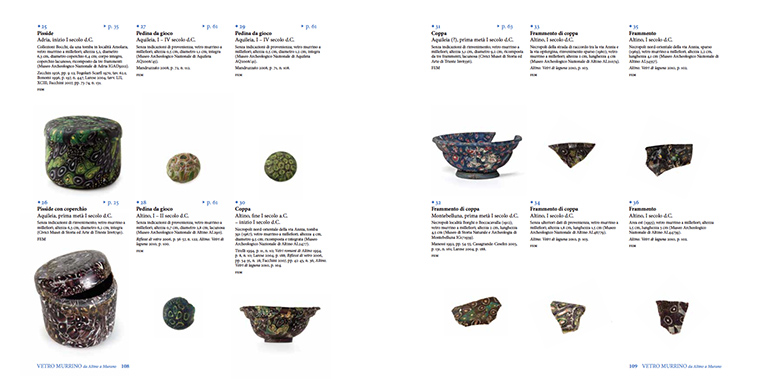Vetro Murrino
progetto, coordinamento editoriale, impaginazione e redazione



Vetro Murrino
da Altino a Murano
Vetro murrino, da Altino a Murano indaga la storia del vetro mosaico o “murrino” dalle sue origini fino alla produzione contemporanea, creando una connessione ideale tra le due epoche e i due siti, la città progenitrice di Venezia e l’isola del vetro.
Attraverso un excursus storico nei saggi di carattere archeologico di Margerita Tirelli, Paola Ventura e Luciana Mandruzzato, viene presentata una ricca panoramica sui reperti provenienti dai siti archeologici del territorio alto adriatico, in particolare da Altino, Aquileia e Adria.
Si tratta di esemplari di pissidi, balsamari e coppe dalle vivaci colorazioni, che testimoniano la produzione di vetro mosaico, anche soffiato, di epoca romana. Il saggio di Rosa Barovier Mentasti, oltre ad affrontare la delicata questione terminologica del termine “murrino”, dà ragione del legame ideale e della continuità storica tra la tecnica, decaduta nel tardo Impero romano e ripresa nel ix secolo in Mesopotamia, e il recupero dell’arte da parte dei vetrai muranesi dell’Ottocento. Il racconto delle sfide tecniche legate alla produzione del vetro murrino, nel testo di Cesare Moretti, chiarisce le tipologie e i metodi ancor oggi in uso a Murano.
Le opere in vetro murrino moderne e contemporanee, ospitate nel Museo del Vetro di Murano, la cui storia viene ripercorsa nel saggio di Chiara Squarcina, concludono idealmente il percorso, riconsegnando il senso del legame di quest’arte con Murano, ancora oggi luogo privilegiato della produzione artistica.
Murrino Glass
from Altino to Murano
Murrino Glass, from Altino to Murano investigates the history of murrino glass (also referred to as ‘mosaic glass’) from its origins to the present-day by examining the relationships between the two eras and between the two sites: Altino, the town which was the progenitor of Venice, and Murano, the island of glass.
The texts by Margerita Tirelli, Paola Ventura and Luciana Mandruzzato present a fascinating collection of finds from archaeological sites in the Adriatic territory, in particular from Altino, Aquileia and Adria. The items include glass boxes, balsamaria and brilliantly coloured cups: testimony to the production of mosaic glass – including blown mosaic glass – from the Roman era.
As well as addressing the delicate question regarding the terminology of the word ‘murrino’, the section by Rosa Barovier Mentasti folows the theme of historical continuity between the technique – which declined during the late Roman Empire before being revived in the ninth century in Mesopotamia – and the revival of the art by Muranese glassmakers in the nineteenth century.
Cesare Moretti’s account of the technological challenges inherent in the production of murrino glass sheds light on typologies and methods still in use in Murano.
The text by Chiara Squarcina retraces the history of modern and contemporary works in murrino glass on display in the Murano Glass Museum, concluding the timeline and reaffirming the bonds between this intricate form of art and the island of Murano, the paramount centre of artistic glass production.

0